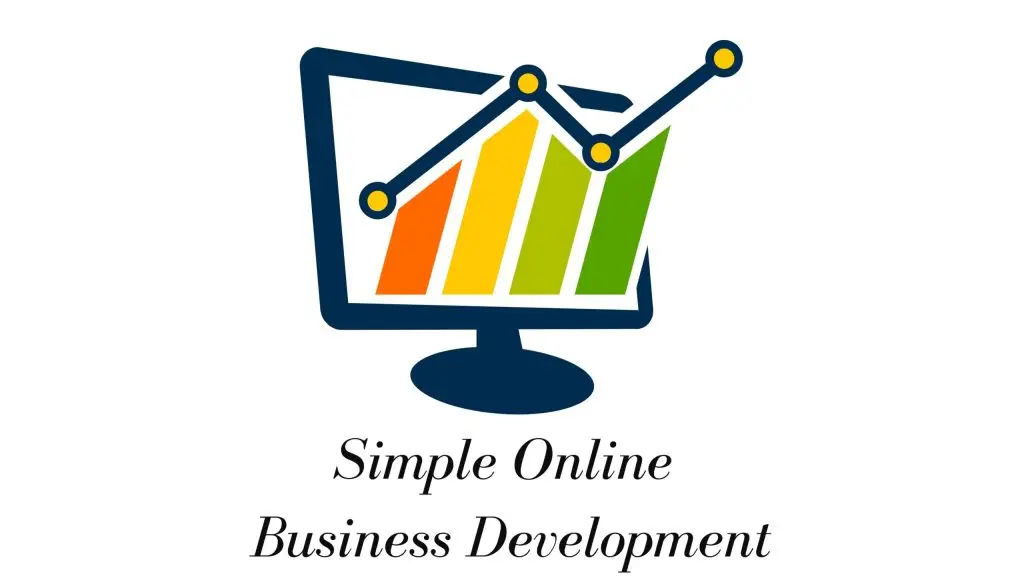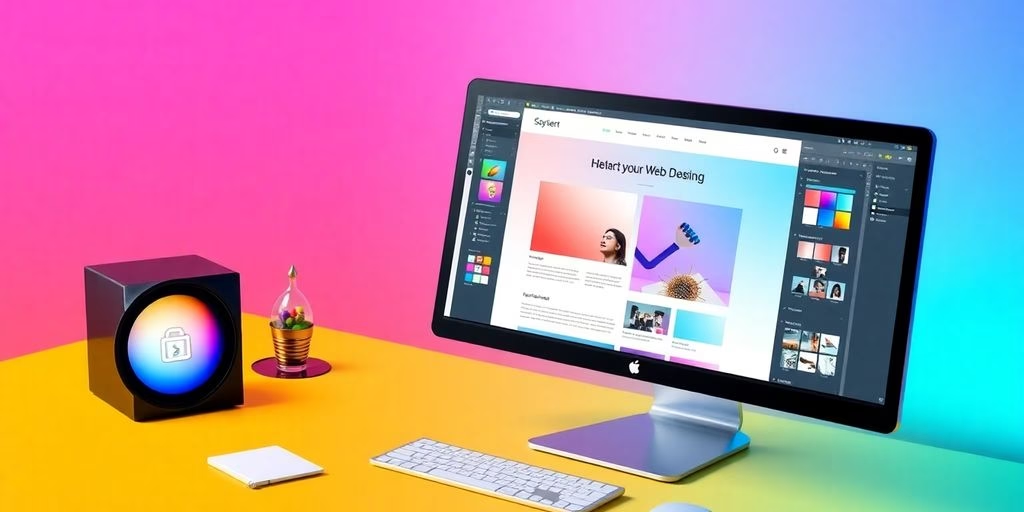Affiliate marketing is changing fast, and if you’re not keeping up, you might be left behind. With 2025 on the horizon, it’s time to rethink your strategies and embrace new advertising methods. Whether you’re just starting out or looking to boost your sales, understanding these innovative strategies can set you apart from the competition. From social media to SEO, there’s a lot to explore and implement.
Key Takeaways
- Social media is a game-changer for affiliate marketing, especially when you focus on engaging content and community building.
- Email marketing remains effective, but it’s all about crafting the right message and using automation wisely.
- SEO isn’t just for websites; it’s a crucial part of your affiliate strategy to drive organic traffic.
- Content marketing is evolving, and using storytelling, interactive content, and videos can significantly increase engagement.
- Data analytics can refine your strategies, helping you to make informed decisions and optimize your campaigns.
Harnessing the Power of Social Media for Affiliate Marketing
Social media has totally changed the game for affiliate marketing. It’s not just about posting links anymore—it’s about creating a buzz and getting people talking. Let’s dive into some cool strategies you can use to make the most of social media.
Creating Engaging Content That Converts
Creating content that grabs attention is key. You want stuff that not only catches the eye but also gets clicks. Think about using a mix of graphics, videos, and interactive posts. And don’t forget to tell a story—people love a good narrative. The goal? Make your audience feel something, and they’ll be more likely to hit that buy button.
Building a Community Around Your Brand
Building a community is all about creating a space where people feel like they belong. Start by engaging with your followers—ask questions, respond to comments, and show genuine interest in their lives. Host live Q&A sessions or start a group where people can share their thoughts. When people feel connected to your brand, they’re more likely to stick around and support you.
Leveraging Influencers to Expand Reach
Influencers can be a game-changer for your affiliate marketing efforts. They already have a built-in audience that trusts them, so partnering with the right influencer can give your brand a big boost. Look for influencers whose values align with yours and who have an engaged following. A good influencer partnership can introduce your brand to a whole new crowd and expand your reach far beyond your current audience.
"Social media has revolutionized affiliate marketing by enhancing speed, interactivity, and engagement. Unlike traditional methods, these platforms facilitate a more dynamic approach, allowing for real-time interactions and a broader reach."
With these strategies, social media can become a powerful tool in your affiliate marketing arsenal. It’s all about making connections and creating content that resonates with your audience. So get out there and start engaging!
Email Marketing: A Timeless Strategy for Affiliate Success

Email marketing has been around for ages, yet it remains one of the most effective methods to boost your affiliate sales. It’s like the trusty old bicycle of marketing strategies—reliable and efficient. Let’s dive into how you can make the most out of this timeless approach.
Crafting Compelling Email Campaigns
Creating a successful email campaign is like crafting a fine piece of art. You need to know your audience, understand their needs, and then deliver content that speaks directly to them. A well-crafted email can significantly increase your conversion rates.
- Personalization: Address your subscribers by their names and tailor content to their preferences.
- Clear Call-to-Action: Make sure your emails have a clear, concise call-to-action that guides your readers on what to do next.
- Engaging Subject Lines: The subject line is your first impression. Make it count!
Segmenting Your Audience for Better Results
Not all subscribers are the same, and treating them as such is a missed opportunity. Segmenting your audience allows you to send more targeted emails, which can lead to better engagement.
- Demographics: Group your audience by age, gender, or location.
- Behavioral: Consider how subscribers interact with your emails and website.
- Purchase History: Tailor emails based on past purchases or browsing history.
Utilizing Automation for Efficiency
Automation is a game-changer in email marketing. It saves time and ensures that your messages are sent at the right moment.
- Welcome Series: Automatically send a series of welcome emails to new subscribers.
- Abandoned Cart Reminders: Remind customers of items left in their cart.
- Birthday Offers: Send personalized offers on your subscribers’ birthdays.
Email marketing is not just about sending messages; it’s about building relationships. Every email is an opportunity to connect with your audience and turn them into loyal customers.
For more on this, check out our guide on email marketing strategies, which offers insights for beginners and small business owners. It’s packed with practical tips to get you started on your email marketing journey.
SEO Techniques to Enhance Your Affiliate Marketing Efforts
Optimizing Content for Search Engines
Getting your content to rank high on search engines is a game-changer for affiliate marketers. Start by ensuring your website is fast and mobile-friendly—Google loves that! Use relevant keywords naturally throughout your content, but don’t overdo it. Think of it like seasoning your food; too much can ruin the dish. Also, write catchy meta titles and descriptions. These are like your content’s first impression, so make them count.
Building Quality Backlinks
Backlinks are like votes of confidence from other websites. The more you have, the more search engines trust your site. But remember, quality over quantity. Focus on getting links from reputable sites related to your niche. You can do this by guest blogging or collaborating with others in your industry. It’s like networking, but online! And don’t forget to keep an eye on your existing backlinks to ensure they stay relevant and active.
Using Keywords Effectively
Keywords are the backbone of SEO. Using them wisely can drive a ton of traffic to your site. Start by researching what terms your audience is searching for. Tools like Google Keyword Planner can help with this. Once you have your list, sprinkle these keywords naturally throughout your content. And don’t forget about long-tail keywords—these are longer phrases people search for and can be less competitive. They’re like the hidden gems of SEO.
Innovative Content Marketing Strategies for Affiliates
Storytelling to Connect with Your Audience
In the world of affiliate marketing, storytelling is like the secret sauce that makes everything taste better. It’s not just about selling a product; it’s about weaving a narrative that resonates with your audience. When you tell a story, you create an emotional connection that can lead to trust and loyalty. Stories have the power to transform mundane product descriptions into engaging tales that captivate your audience. Consider sharing personal experiences or customer success stories that highlight the benefits of your affiliate products. Remember, authenticity is key—people can spot a fake story from a mile away.
Creating Interactive Content
Interactive content is a game-changer for affiliate marketers. It’s not just about reading or watching; it’s about engaging. Think quizzes, polls, and interactive videos. These tools invite your audience to participate actively, making them feel part of the experience. For instance, a quiz that helps users find the perfect product based on their preferences can significantly boost engagement. Here’s a simple list of interactive content ideas:
- Quizzes that recommend products
- Polls to gather audience opinions
- Interactive infographics that explain complex topics
Utilizing Video to Boost Engagement
Video content is king, and it’s here to stay. With platforms like YouTube and TikTok, videos are the go-to medium for many consumers. They’re engaging, easy to digest, and perfect for showcasing products in action. A short video demonstrating how a product works or sharing a customer testimonial can be more persuasive than a lengthy blog post. Plus, videos are easily shareable, increasing your reach. Don’t underestimate the power of a well-crafted video to drive sales.
In the ever-evolving landscape of digital marketing, staying ahead means embracing new ways to connect with your audience. By integrating storytelling, interactive content, and video, affiliates can create a dynamic marketing strategy that not only attracts but also retains customers.
For more insights into effective online marketing strategies, explore how innovative approaches can transform your affiliate efforts.
Leveraging Data Analytics to Refine Your Strategies
Tracking Key Performance Indicators
Keeping an eye on your Key Performance Indicators (KPIs) is like having a roadmap for your marketing journey. These metrics tell you what’s working and what isn’t. By focusing on the right KPIs, you can make smarter decisions and improve your affiliate marketing game. Some common KPIs to track include conversion rates, click-through rates, and customer acquisition costs. It’s like having a compass that points you in the right direction.
Using A/B Testing to Optimize Campaigns
A/B testing is a simple yet powerful tool that lets you compare two versions of a marketing asset to see which one performs better. Whether it’s an email subject line or a call-to-action button, A/B testing helps you fine-tune your campaigns for maximum impact. Here’s a quick way to get started:
- Identify the element you want to test.
- Create two variations (A and B).
- Split your audience and show each group a different version.
- Analyze the results to see which one performs better.
- Implement the winning version for better results.
Interpreting Data to Make Informed Decisions
Data is more than just numbers; it’s a treasure trove of insights waiting to be uncovered. When you interpret data correctly, you can make informed decisions that boost your marketing efforts. Start by identifying trends and patterns in your data. Look for correlations between different metrics and use these insights to adjust your strategies. This way, you can ensure your marketing efforts are always aligned with your goals.
Data analytics enhances marketing strategies by optimizing campaign performance and driving better results through data-driven insights. Learn more about data analytics.
Exploring New Platforms for Affiliate Marketing

Tapping into Emerging Social Media Channels
So, you’ve been using the usual social media platforms for affiliate marketing, right? Facebook, Instagram, maybe even Twitter. But guess what? New platforms are popping up all the time, and they’re ripe for the picking. These emerging channels can be goldmines for reaching untapped audiences. Think about platforms like TikTok, which has exploded in popularity with younger demographics. Or even Clubhouse, where audio conversations can lead to genuine connections. It’s all about finding where your audience hangs out now and getting in on the action early.
Exploring Podcast Advertising
Podcasts are booming, and they’re not just for big brands anymore. If you’re not already considering podcast advertising for your affiliate marketing strategy, you might be missing out. Podcasts offer a unique space where listeners are more engaged and receptive to ads. You can either sponsor a podcast episode or get a mention during a show. The key is to find podcasts that align with your niche. This way, your message reaches people who are already interested in what you’re offering.
Utilizing Mobile Apps for Greater Reach
Mobile apps aren’t just for games and social media. They’re becoming a crucial part of affiliate marketing strategies. With the right app partnerships, you can reach users directly on their phones. Imagine your affiliate links integrated into a popular app, offering users exclusive deals or content. It’s a seamless way to engage with potential customers. Plus, with push notifications, you can keep your brand top-of-mind without being intrusive.
Mobile apps and podcasts are not just trends; they’re powerful tools that can transform your affiliate marketing approach. As technology evolves, so should your strategies. Embrace these platforms to stay ahead of the curve and connect with your audience in new and exciting ways.
- Explore new social media channels to find where your audience is.
- Consider podcast advertising for a more engaged audience.
- Partner with mobile apps to integrate your affiliate links seamlessly.
For more on how to enhance your digital marketing strategies, check out this guide which offers insights into leveraging digital platforms effectively.
Building Trust and Credibility with Your Audience
Providing Honest and Transparent Reviews
When it comes to affiliate marketing, honesty is your best policy. Being upfront and transparent about the products or services you’re promoting is crucial. If you genuinely believe in what you’re promoting, it shows, and your audience will appreciate it. Share your personal experiences, both good and bad, with the products. This way, your audience knows they’re getting the real deal, not just a sales pitch.
Engaging with Your Audience Regularly
To build a loyal following, you need to engage with your audience consistently. This could be through regular blog posts, interactive webinars, or simply responding to comments on social media. The key is to be present and active. Here are some ways to keep the conversation going:
- Host Q&A sessions to address any queries.
- Run polls or surveys to understand what your audience wants.
- Share behind-the-scenes content to create a personal connection.
Showcasing Testimonials and Success Stories
Nothing speaks louder than success stories. Showcasing testimonials from satisfied customers can significantly boost your credibility. Encourage your audience to share their experiences with your products and highlight these stories on your platform. Consider creating a section on your website dedicated to success stories, where potential customers can see the positive impact of your recommendations firsthand.
Building trust isn’t about a one-time effort; it’s an ongoing process that requires dedication and sincerity. Your audience needs to feel valued and heard, and when they do, they’re more likely to trust your recommendations and stay loyal to your brand.
Wrapping It Up
So, there you have it! Affiliate marketing is changing the game, and if you want to stay ahead in 2025, it’s time to get creative. From using influencers to tapping into niche markets, the possibilities are endless. Remember, it’s all about finding what works best for your brand and your audience. Don’t be afraid to experiment and try new things. Who knows? Your next big idea might just be around the corner. Keep pushing, keep innovating, and watch your sales soar. And hey, if you ever need a little extra help or inspiration, don’t forget to check out our resources and tips. We’re here to help you succeed every step of the way. Cheers to your future success!
Frequently Asked Questions
What is affiliate marketing?
Affiliate marketing is a way to earn money by promoting products or services and earning a commission for each sale made through your referral.
How can social media help in affiliate marketing?
Social media can help by allowing you to reach a larger audience, create engaging content, and connect with potential customers.
Why is email marketing important for affiliates?
Email marketing lets you communicate directly with your audience, share promotions, and build long-term relationships.
What are some basic SEO techniques for affiliate marketing?
Basic SEO techniques include using keywords effectively, creating quality content, and building backlinks to improve search engine rankings.
How can data analytics improve my affiliate marketing?
Data analytics can help you track performance, understand customer behavior, and make informed decisions to optimize your strategies.
What are emerging platforms in affiliate marketing?
Emerging platforms include new social media channels, podcasts, and mobile apps that offer fresh opportunities to reach audiences.






















































